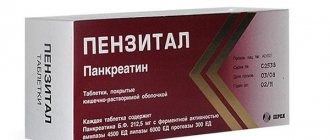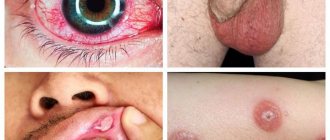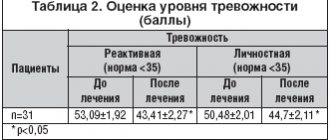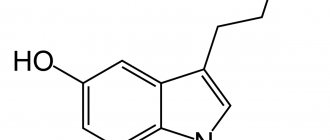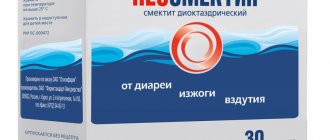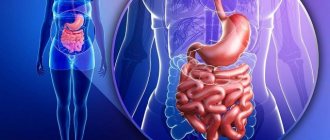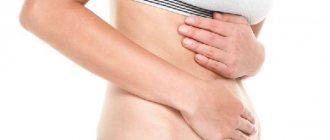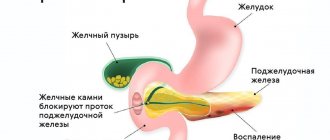Digestive disorders of the gastrointestinal tract: dyspepsia
Details Author: LDC Neuron Published: November 10, 2015
Dyspepsia is a digestive and gastrointestinal disorder, a complex of symptoms characteristic of many diseases, as well as borderline conditions. The main causes of dyspepsia are a lack of digestive enzymes, causing malabsorption syndrome, or, what happens most often, gross errors in nutrition.
Enzymatic dyspepsia is a disorder associated with the enzymatic activity of the digestive organs.
Functional dyspepsia (FD) is a complex of unpleasant symptoms after eating. However, no organic pathology is detected during the examination. In almost half of the cases, FD occurs in combination with irritable bowel syndrome, so experts classify it as a group of biopsychosocial diseases.
The main causes of Functional dyspepsia include psychological trauma and stress.
These factors are identified in most patients with functional dyspepsia. In some cases, the cause of the disease is an increase in the susceptibility of the gastric wall to stretching; in such patients, as a rule, the motor function of the stomach is not impaired. If the pathology is accompanied by symptoms characteristic of a peptic ulcer, then the cause of dyspepsia in this case may be the release of hydrochloric acid in a volume exceeding the norm.
Intestinal dyspepsia can develop due to poor nutrition, in which case it is called nutritional dyspepsia . In the development of intestinal dyspepsia, constitutional weakness of the intestine, as well as sensitization (hypersensitivity) to certain types of food - protein, carbohydrate or fat, are of known importance. There are fermentative, putrefactive and fatty dyspepsia.
Fermentative dyspepsia is caused by excessive consumption of foods rich in carbohydrates: fruits, legumes, cabbage, kvass, honey, etc., as a result of which acidophilic (fermentable) flora is formed in the intestines. Along with changes in intestinal flora, a certain role in the development of fermentative dyspepsia is played by the reduced secretion of diastase by the pancreas, as a result of which the process of carbohydrate breakdown is disrupted.
Putrefactive dyspepsia occurs with excessive consumption of foods of protein origin, especially those that require a long time to digest. Toxic substances formed during the breakdown of proteins cause intoxication of the patient's body. This mainly applies to red meats (lamb, pork, beef) and their derivatives (sausages and other meat products), the abuse of which stimulates the development of putrefactive intestinal microflora. Fatty (soapy) dyspepsia. Caused by eating too much refractory fats, such as lamb and lard and their derivatives.
Dyspepsia, which is a consequence of enzyme deficiency, is of the following types:
- Hepatogenic (liver origin);
- Cholecystogenic (caused by impaired bile secretion);
- Pancreatogenic (lack of pancreatic enzymes);
- Gastrogenic (caused by disruption of the secretory function of the stomach);
- Enterogenous (disturbed secretion of intestinal juice);
- Mixed dyspepsia.
When should you seek help?
If you know exactly the reason for the change in stool (poisoning, change in diet on a business trip, taking medications), then you can limit yourself to remedies that eliminate discomfort. And when the cause of constipation or diarrhea is not clear and the appropriate medications do not give the desired effect, it is worth visiting our doctor.
Black or light-colored stool is also a signal that you should seek help from our clinic’s specialists. And of course, you should not delay visiting a doctor if there is blood in your stool.
Symptoms of dyspepsia
Symptoms of dyspepsia can manifest themselves in different ways, depending on the specific type of disorder, but there are signs that are simultaneously characteristic of all types of the disease.
Different types of dyspepsia have the following common symptoms:
- the appearance of unpleasant sensations in the so-called espiral area, that is, in the upper abdomen. The patient experiences feelings of bloating and heaviness, sometimes pain of varying intensity occurs;
- belching. Rare isolated cases of belching are not signs of the disease. Dyspepsia is indicated only by constant frequent belching;
- nausea, heartburn. The patient experiences an unpleasant burning sensation in the upper abdomen, as well as in the chest area. This sensation appears when aggressive stomach contents enter the esophagus. Normally, such phenomena should not happen;
- flatulence. A feeling of bloating, as well as increased gas production, can be caused by increased formation of gases in the intestines;
- bowel disorder. Patients who suffer from dyspepsia have irregular, usually frequent, bowel movements.
Dyspepsia, which is caused by a lack of digestive enzyme, has the following symptoms:
- nausea;
- unpleasant taste in the mouth;
- transfusion and rumbling in the abdomen, malaise, weakness;
Sometimes patients experience headaches and insomnia. Stool often contains large amounts of food that is poorly digested.
Functional dyspepsia is manifested by such unpleasant symptoms as pain, discomfort in the pancreas after eating, accompanied by heaviness, fullness, and early satiety.
Fermentative dyspepsia. The main symptoms of fermentative dyspepsia are bloating of the intestines with the release of a large amount of gases, frequent liquid foamy stools with a sour odor. Abdominal pain is tolerable or absent. A very typical sign of fermentative dyspepsia is the nature of bowel movements. They are lightly colored, contain few gas bubbles, a large amount of starch grains, fiber, iodophilic microbes and organic acids.
Putrid dyspepsia is in many ways reminiscent of intoxication: the patient feels weakness and general malaise, feels nausea and a severe headache. The stool is dark and liquid, has an unpleasant and rather pungent odor, and stools are frequent.
Fatty dyspepsia , unlike other types of dyspepsia, is not characterized by frequent diarrhea. Patients suffering from fatty dyspepsia experience a feeling of fullness and heaviness in the abdomen, complain of flatulence and belching, as well as severe pain that begins half an hour after eating. Feces have a whitish color and a greasy sheen: these are the remains of fat that does not have time to be digested. The stool is plentiful.
Dyspepsia in young children manifests itself in regurgitation and bloating. The stool is frequent, more than six times a day, the stool is green, and there are whitish flakes. At the same time, the child is capricious, sleeps and eats poorly.
Literature
- E. A. Lyalyukova, V. N. Drozdov. “Unspecified dyspepsia”: differential diagnosis, tactics for patient management at the outpatient stage. Attending doctor. No. 8, 2021.
- E. I. Vovk. Functional and organic dyspepsia: “crossover” of diagnostic and treatment strategies in general practice. Attending physician. No. 9, 2012.
- Instructions for use of the drug IMODIUM® Express
- Register of medicines in Russia. Active ingredients. Loperamide. https://www.rlsnet.ru/mnn_index_id_637.htm.
- A study by Ameri et al. "A multicenter, double-blind study: a comparison of the effectiveness of loperamide in acute diarrhea with two popular antidiarrheal agents and placebo," 1975.
Treatment of dyspepsia
Before starting treatment for intestinal dyspepsia, the type of disease is determined in order to select the right diet on the first day of therapy. In case of nutritional dyspepsia, the patient is advised to completely abstain from eating for two days. The transition to a normal diet should be gradual and consistent. In the case of fermentative dyspepsia, the patient should abstain from foods rich in carbohydrates. For fatty dyspepsia, a low-fat diet is prescribed; for putrefactive dyspepsia, the patient must limit the intake of protein foods. Treatment of enzymatic dyspepsia requires taking medications containing digestive enzymes.
Treatment of functional dyspepsia
Diet therapy and giving up bad habits play a very important role in the treatment of functional dyspepsia. Nicotine, alcohol, coffee, disrupting gastrointestinal motility, can provoke relapses of the disease. A balanced diet for patients in this case involves frequent and small meals, and it is recommended to significantly reduce the content of saturated fatty acids in their diet.
In the dyskinetic form of the pathology, the main drugs for the treatment of dyspepsia are prokinetics (metoclopramide and domperidone), which have a beneficial effect on the motor function of the gastrointestinal tract. It should be remembered that in 20-30% of patients, metoclopramide, especially with long-term use, causes undesirable side effects from the central nervous system in the form of drowsiness, fatigue and anxiety, therefore the drug of choice for the treatment of functional dyspepsia is domperidone, which does not cause such side effects.
Treatment of intestinal dyspepsia
Treatment of fermentative dyspepsia consists of limiting, or better yet completely eliminating, carbohydrates from the diet for 3-4 days. The general condition of patients with this form of dyspepsia suffers slightly. Acute fermentative dyspepsia can be quickly eliminated with the right diet. However, sometimes if the dietary regimen is not followed, dyspepsia can become chronic. The aggravating factor is achylia. Dyspepsia in some cases can develop into chronic enteritis and chronic enterocolitis. After 1-2 fasting days, you should prescribe an increased amount of proteins (cottage cheese, lean meat, boiled fish), meat broth with a small amount of white bread. In the future, water porridge, fruit purees and jelly are gradually included in the diet (see Diet No. 4 according to Pevzner). After 2-3 weeks, vegetables and fruits are allowed.
If diarrhea does not go away quickly, prescribe calcium carbonate 0.5-1 g 3-4 times a day, magnesium perhydrol 0.5 g 3 times a day. For a long time, the consumption of vegetables rich in coarse plant fiber is prohibited - cabbage, legumes, cucumbers, beets, etc.
Treatment of putrefactive dyspepsia also involves prescribing a diet. After one hungry day, they switch to a diet rich in carbohydrates. It is advisable to prescribe fruit juices and grated apples 1-1.5 kg per day for 2-3 days. Then the diet includes mucous infusions of rice, semolina porridge with water, crackers, and white bread. After 5-7 days, add butter, fresh lean fish, chicken, vegetable soups, mashed potatoes or carrots. Among medications, natural gastric juice, bismuth nitrate, pancreatin, and chloramphenicol are recommended.
Treatment of fatty dyspepsia comes down to limiting the amount of fat consumed in food. The diet includes complete animal proteins: lean meat, low-fat cottage cheese, boiled fish, etc. The consumption of carbohydrates is moderately limited. Medicines prescribed include calcium carbonate, bismuth, and vitamins - ascorbic acid, nicotinic acid, cyanocobalamin.
LDC "Neuron"
- < Back
- Forward >
Survey
First of all, our specialist will perform an external examination and palpation of the abdomen, and, if necessary, a rectal digital examination. For a more accurate diagnosis, you will have to take some tests (blood, urine and, of course, feces), as well as undergo an ultrasound of the abdominal organs.
If a doctor at our clinic suspects a specific disease, there may be a need to conduct additional research at a diagnostic center. In particular, you may be prescribed:
- gastroscopy
- computed tomography of the abdomen and pelvic organs
- colonoscopy
- ERCP
- irrigoscopy
- sigmoidoscopy.
Thanks to the use of new generation equipment and the professionalism of our doctors, discomfort from the procedures is minimized.
See also : Make an appointment with a gastroenterologist.
Acceleration of peristalsis
Sometimes the functioning of the intestines follows an accelerated pattern. Wave-like contractions occur at a faster speed than normal. This condition can be caused by oncological pathology, microflora disorders, or the development of chronic diseases. Externally, increased peristalsis is expressed in attacks of diarrhea. Diarrhea is accompanied by pain, foamy discharge, and the stool is watery.
To normalize the situation, it is necessary to be examined to accurately determine the cause of this condition. After this, you can take action. Illiterate treatment can completely destabilize the condition. If serious problems cannot be identified, then the cause is poor nutrition. After following the diet, the condition should improve. To speed up recovery. You can take medications that slow down peristalsis. These are diara, imodium and its analogue - loperamide.
Features of intestinal motility
Peristalsis refers to reflex actions.
The normal functioning of the intestine occurs as a systematic contraction of the muscles lining the walls of this organ. The contractions are wavy in nature.
They become possible due to the peculiar structure of muscle fibers in this area. Firstly, they have a double layer.
Secondly, the direction of the muscle fibers of the upper and lower layers does not coincide, but runs perpendicular to each other. The intensity of contractions varies depending on the section of the intestine.
In the small intestine, contractions occur either quite slowly or very rapidly, depending on the situation. But in the large intestine, contractions can only be slow, because a large bolus of food moves there. However, they are also systematic. Otherwise, the chyme would not be able to reach the anus. These contractions are commonly called peristalsis.
Peristalsis refers to reflex actions. It occurs immediately after the appearance of food in the gastrointestinal tract. The average frequency of contractions in different parts of the intestine is as follows:
- duodenum - approximately 10 per minute;
- small intestine – 9 – 10 / min;
- large intestine – 3 – 4 / min;
- rectum - up to 3.
If any reasons have affected the slowdown of peristalsis, the entire body is exposed to the negative effects of the consequences. Minerals and other beneficial substances are less easily absorbed, causing problems with bowel movements.
As a result, elements of chyme that are not removed in time decompose, leading to the spread of toxins throughout the body, contributing to the development of symptoms characteristic of intestinal dyskinesia.
